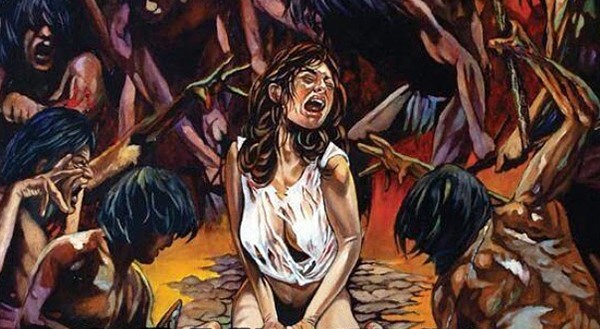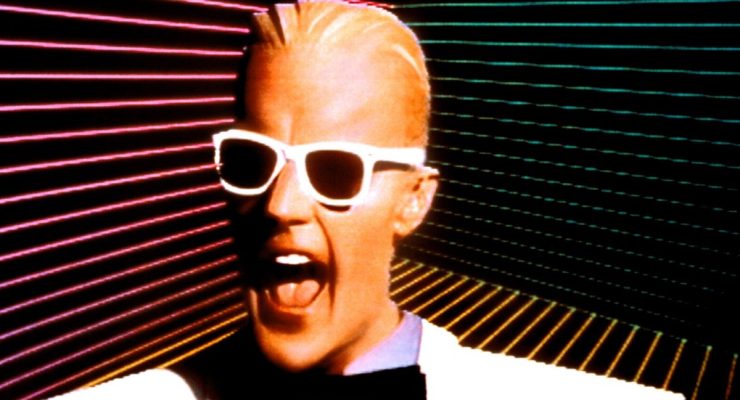Once Cut of the Dead, 2018.
Directed by Shin’ichirô Ueda.
Starring Yuzuki Akiyama, Takuya Fujimura, Ayana Gôda, Takayuki Hamatsu and Manabu Hosoi.
SYNOPSIS:
Things go badly for a hack director and film crew shooting a low budget zombie movie in an abandoned WWII Japanese facility, when they are attacked by real zombies.

Shin’ichirô Ueda’s One Cut of the Dead is a three-headed zom-com beast comprised of vastly different cinematic experiences. My best advice? Go into your first viewing blind and *don’t* lose patience. Japan’s horror-comedy front is brimming with contextual ambition if Ueda’s changeling is any indication, so unafraid to challenge norms in zombie culture. Trust the process. Soak in every act. Then come back and let’s talk about it.
Or don’t and read onward.
Still here? Welp, be warned. We’re going to discuss how One Cut of the Dead distances itself from the herd in detail so expect spoilers. Continue at your own risk!
Phase one is a single-camera, one-shot, 30-minute continuous take about an indie zombie production that gets attacked by true-to-form zombies. “Mr. Director” brings his cast to a water filtration plant shooting locale, *fully aware* of the urban legend that lurks. Spill blood a certain way on the roof and flesh eaters will rise. Of course, Mr. Director loves this “realism” because his actors are all prima donnas and fakers. While cast and crew run for their lives, their captain keeps popping out yelling “ACTION!” like he’s enjoying the whole doomsday scenario. Heads roll, footage is recorded and a final girl emerges – then “cut” is yelled to confirm we’ve just watched a movie-within-a-movie.
Hence One Cut of the Dead.
Admittedly, this first take is the weakest aspect of Ueda’s shapeshifter conceit. Those here for a straight-up Japanese zombie comedy will be treated to a fairly low-budget affair where you’re supposed to pick up on imperfections and oddities. Some will want to forfeit and press stop, but please ignore your primal horror instincts. One must first watch as a viewer to fully appreciate Ueda’s second and thirds acts, which are satirical testaments to low-budget filmmaking. The in-movie “One Cut of the Dead” is intentionally schlocky and not always A-grade. Patience, grasshopper.
Phase two brings us a month before production, as not-yet-director Higurashi (Takayuki Hamatsu) meets with two suited-up station executives. They pitch their live broadcast idea for a new “zombies only” channel (Zombie Channel), along with a one-of-a-kind cinematic experience: One Cut of the Dead. Higurashi laughs, but before long he’s sitting in a table read with drunks, crying babies and existentially-inclined actors. Higurashi’s motto is “fast, cheap and average,” but One Cut of the Dead looks to challenge all that on teamwork alone. Thus brings us to rehearsals, character establishments and everything leading up until the big premiere day.
Live television, where all your mistakes are broadcast to millions. No pressure.
As we learn about Mr. Director’s life and personal manifesto, we also understand what it takes to be a filmmaker. Not everyone works on big-budget projects or gets pampered studio treatments. Sometimes you earn a steady paycheck shooting karaoke background videos or commercials. Sometimes you get a reputation such as “fast, cheap and average,” which Higurashi himself boasts. Enter the director’s daughter (always in Western movie culture t-shirts), a punkish over-manager who becomes this fanatical tyrant on-set when demanding authenticity – who, of course, wants the same for her father. Cue emphatic debates about the fire that fuels filmmaking, digging deep inside and challenging one’s truest self. This is where Ueda finds his footing.
Phase three establishes and ends with Mr. Director’s hopeful attempt to shoot One Cut of the Dead without any hiccups, which – rightfully so – goes messily not as planned. A celebratory bottle of saké renders the cast lush unresponsive and drunk, camera rigs fall from rooftops and actors who don’t show up to set must be replaced. This means Higurashi steps in as the on-screen director as well, and his wife – a self-defense obsessed former performer who “gets too lost in her roles” – must fill in for the “Make-Up Woman.” Lotsa improv, multiple scripted casualties and metamorphosis filmmaking. All in a day’s work?
It might be too little and too late for some, but this is where Ueda hits full stride. Intricacies one might have noticed during “One Cut of the Dead” are exposed as on-the-fly switch-ups or in-the-moment necessities. PAs run around with rubber tubes and blow fake blood into actor faces while cameramen stumble as thirty minutes of behind-the-scenes chaos is exposed in grand view. Everything that can go wrong does go wrong, which “Mr. Director” must adapt to. Fake vomit turns out to be real, the “Sound Guy” reveals his reason for running out of scene, snobby actors are put in their place – this is where the proverbial magic happens. Where the sauce is made. Full circle completionism as an ode to the dreamers, madmen, and naysayers of “no you can’t” told through a riotous genre lens.
In the end, Shin’ichirô Ueda bucks trendy norms and presents horror fans a unique peek behind mystic curtains where creators work. One Cut of the Dead starts on a purposefully cheesy note, asserts its intent, then ends on the continued high of film production mayhem. Once Higurashi yells cut and everyone involved – still covered in prosthetics and goo – smiles their collective faces off with pride, everything is illuminated. It’s not always the easiest or most engaging watch before on-screen filming begins, but when it does, expect non-stop mayhem and amusement. Promise me you’ll see this one through?
Flickering Myth Rating – Film: ★★★ / Movie: ★★★
Feel free to follow Matt Donato on Twitter (@DoNatoBomb) – if you dare.













